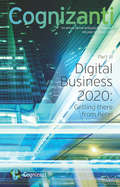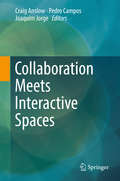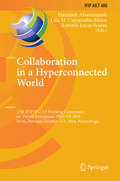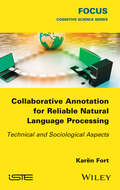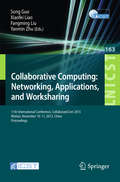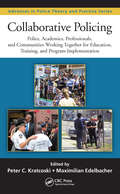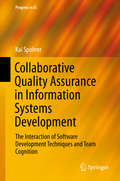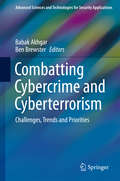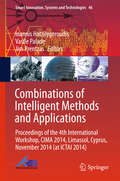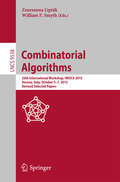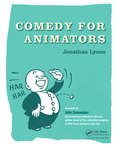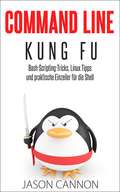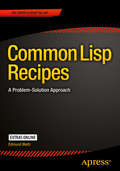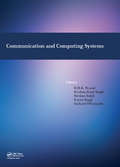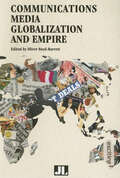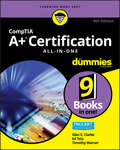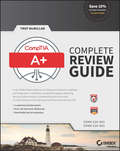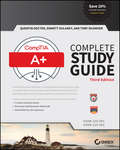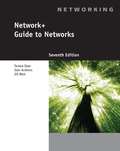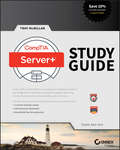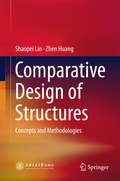- Table View
- List View
Cognizanti: An annual journal produced by Cognizant | VOLUME 9 ISSUE 1 2016 ((Part III) Digital Business 2020: Getting there from here! #3)
by Matthew Smith Reshma Trenchil Alan Alper Gary Beach Anand Chandramouli Bruce J. Rogow Stan Iyer Rajaram Radhakrishnan Mary Murphy-Hoye Prasad Satyavolu David Delano Rob Ao2 Ted Shelton Rob Asen Asen Burkhard Blechschmidt Jagan Ramachandran Manish Bahl Dharmesh MistryProgress on the Path to Digital Authenticity This edition of Cognizanti explores the essence of what it means to be digital (think of a digital-to-the-core attitude and customer autonomy as critical operating constructs) and amplifies the role that the thoroughly modern CIO can play in helping organizations achieve progress, both from a leadership and "gig" economy point of view. From there, we examine the evolving world of intel-ligent automation (systems that do, think, learn and adapt), as well as the emerging landscape of business platforms, where companies of all sizes and shapes can plug and play in ecosystems that they either own, manage or merely participate in. This new approach introduces an interesting variation on the "co-opetition" theme that has pervaded business for the past few decades.
Collaboration Meets Interactive Spaces: Theory And Practice
by Joaquim Jorge Pedro Campos Craig AnslowThis book explores the technological advances and social interactions between interactive spaces, surfaces and devices, aiming to provide new insights into emerging social protocols that arise from the experimentation and long-term usage of interactive surfaces. This edited volume brings together researchers from around the world who investigate interactive surfaces and interaction techniques within large displays, wearable devices, software development, security and emergency management. Providing both theory and practical case studies, the authors look at current developments and challenges into 3D visualization, large surfaces, the interplay of mobile phone devices and large displays, wearable systems and head mounted displays (HMD'S), remote proxemics and interactive wall displays and how these can be employed throughout the home and work spaces. Collaboration Meets Interactive Spaces is both for researchers and industry practitioners, providing readers with a coherent narrative into the current state-of-the-art within interactive surfaces and pervasive display technology, providing necessary tools and techniques as interactive media increasingly permeates everyday contexts.
Collaboration in a Hyperconnected World: 17th IFIP WG 5.5 Working Conference on Virtual Enterprises, PRO-VE 2016, Porto, Portugal, October 3-5, 2016, Proceedings (IFIP Advances in Information and Communication Technology #480)
by Luis M. Camarinha-Matos Hamideh Afsarmanesh António Lucas SoaresThis book constitutes the refereed proceedings of the 17th IFIP WG 5. 5 Working Conference on Virtual Enterprises, PRO-VE 2016, held in Porto, Portugal, in October 2016. The 57 revised papers were carefully reviewed and selected from 148 submissions. They provide a comprehensive overview of identified challenges and recent advances in various collaborative network (CN) domains and their applications, with a strong focus on the following areas: hyperconnected systems, managing data and knowledge, networked business processes, collective intelligence and decision making, creating supply and production networks, operating and management of networks, collaborative engineering, product services, intelligent product ecosystems, product personalization, service orientation, cloud technology aspects for VOs, design science research, business models in hyperconnected context, agribusiness value chain, and collaborative networks in circular economy.
Collaborative Annotation for Reliable Natural Language Processing: Technical and Sociological Aspects
by Karën FortThis book presents a unique opportunity for constructing a consistent image of collaborative manual annotation for Natural Language Processing (NLP). NLP has witnessed two major evolutions in the past 25 years: firstly, the extraordinary success of machine learning, which is now, for better or for worse, overwhelmingly dominant in the field, and secondly, the multiplication of evaluation campaigns or shared tasks. Both involve manually annotated corpora, for the training and evaluation of the systems. These corpora have progressively become the hidden pillars of our domain, providing food for our hungry machine learning algorithms and reference for evaluation. Annotation is now the place where linguistics hides in NLP. However, manual annotation has largely been ignored for some time, and it has taken a while even for annotation guidelines to be recognized as essential. Although some efforts have been made lately to address some of the issues presented by manual annotation, there has still been little research done on the subject. This book aims to provide some useful insights into the subject. Manual corpus annotation is now at the heart of NLP, and is still largely unexplored. There is a need for manual annotation engineering (in the sense of a precisely formalized process), and this book aims to provide a first step towards a holistic methodology, with a global view on annotation.
Collaborative Computing: 11th International Conference, CollaborateCom 2015, Wuhan, November 10-11, 2015, China. Proceedings (Lecture Notes of the Institute for Computer Sciences, Social Informatics and Telecommunications Engineering #163)
by Song Guo Xiaofei Liao Fangming Liu Yanmin ZhuThisbook constitutes the thoroughly refereed proceedings of the 11th InternationalConference on Collaborative Computing: Networking, Applications, andWorksharing, CollaborateCom 2015, held in Wuhan, China, in November 2015. The 24 full papers and 8 short papers presented were carefullyreviewed and selected from numerous submissions. They address topics aroundnetworking, technology and systems, including but not limited to collaborativecloud computing, architecture and evaluation, collaborative applications,sensors and Internet of Things (IoT), security.
Collaborative Policing: Police, Academics, Professionals, and Communities Working Together for Education, Training, and Program Implementation (Advances in Police Theory and Practice)
by Peter C. Kratcoski Maximilian Edelbacher"The chapters in this book reveal that police education, training, and practices are now closely tied to collaboration between police, academics, professional practitioners, and community agencies, and such collaboration is described and evaluated." Dilip K. Das, PhD, Founding President, International Police Executive Symposium (IPES) and founding
Collaborative Quality Assurance in Information Systems Development: The Interaction of Software Development Techniques and Team Cognition (Progress in IS #0)
by Kai SpohrerThis book examines how and why collaborative quality assurance techniques, particularly pair programming and peer code review, affect group cognition and software quality in agile software development teams. Prior research on these extremely popular but also costly techniques has focused on isolated pairs of developers and ignored the fact that they are typically applied in larger, enduring teams. This book is one of the first studies to investigate how these techniques depend on and influence the joint cognitive accomplishments of entire development teams rather than individuals. It employs theories on transactive memory systems and functional affordances to provide answers based on empirical research. The mixed-methods research presented includes several in-depth case studies and survey results from more than 500 software developers, team leaders, and product managers in 81 software development teams. The book's findings will advance IS research and have explicit implications for developers of code review tools, information systems development teams, and software development managers.
Color Switch Juego en Línea La Guía No Oficial
by The Yuw Dafne Abad Romero*GUÍA NO OFICIAL* Además de la compra de este eBook siéntete libre de suscribirte a nuestro programa suplementario de guías gratis. Copiando el link que se encuentra más abajo, tendrás acceso a las últimas actualizaciones para los videojuegos más populares en línea. Suscríbete gratis aquí: http://emailsignupform.subscribemenow.com/ Guía de Consejos Avanzados y Estrategias. Es la guía más comprensible y detallada que encontrarás en línea. Disponible para descarga inmediata en tu teléfono móvil, dispositivo de eBook o en papel. Con el éxito de mis otros cientos de libros de guías y estrategias. He escrito otra guía avanzada profesional para jugadores nuevos y veteranos, la cual contiene estrategias específicas y consejos de cómo progresar en el juego, vencer a tus oponentes, adquirir más monedas, ! y mucho más¡ Aquí está lo que obtendrás al comprar esta detallada guía avanzada y profesional. - Consejos Profesionales y Estrategias. - Trucos y Hacks. - Secretos, Consejos, Trucos, Desbloqueos y !Trucos Usados Por Jugadores Profesionales! - Cómo conseguir toneladas de Monedas. - !Y MUCHO MÁS! Todas las versiones de ésta guía tienen capturas de pantalla para ayudarte a entender mejor el juego. No existe otra guía que sea tan avanzada y comprensible como esta. Estarás feliz de haber comprado ésta guía ya que te beneficiarás mucho de ella comparado con las otras guías menos efectivas que encontrarás. !Compra ahora y derrota a tus oponentes! !Conviértete en un jugador Profesional Hoy! Para soporte y más información de nuestros productos por favor visita el sitio: http://www.hiddenstuffentertainment.com/ Declaración: Este producto no está asociado, afiliado, avalado o patrocinado por el dueño original de los derechos de autor, ni están revisados, probados o certificados..
Combatting Cybercrime and Cyberterrorism: Challenges, Trends and Priorities (Advanced Sciences and Technologies for Security Applications)
by Babak Akhgar Ben BrewsterThis book comprises an authoritative and accessible edited collection of chapters of substantial practical and operational value. For the very first time, it provides security practitioners with a trusted reference and resource designed to guide them through the complexities and operational challenges associated with the management of contemporary and emerging cybercrime and cyberterrorism (CC/CT) issues. Benefiting from the input of three major European Commission funded projects the book's content is enriched with case studies, explanations of strategic responses and contextual information providing the theoretical underpinning required for the clear interpretation and application of cyber law, policy and practice, this unique volume helps to consolidate the increasing role and responsibility of society as a whole, including law enforcement agencies (LEAs), the private sector and academia, to tackle CC/CT. This new contribution to CC/CT knowledge follows a multi-disciplinary philosophy supported by leading experts across academia, private industry and government agencies. This volume goes well beyond the guidance of LEAs, academia and private sector policy documents and doctrine manuals by considering CC/CT challenges in a wider practical and operational context. It juxtaposes practical experience and, where appropriate, policy guidance, with academic commentaries to reflect upon and illustrate the complexity of cyber ecosystem ensuring that all security practitioners are better informed and prepared to carry out their CC/CT responsibilities to protect the citizens they serve.
Combinations of Intelligent Methods and Applications: Proceedings of the 4th International Workshop, CIMA 2014, Limassol, Cyprus, November 2014 (at ICTAI 2014) (Smart Innovation, Systems and Technologies #46)
by Vasile Palade Ioannis Hatzilygeroudis Jim PrentzasThis volumeincludes extended and revised versions of the papers presented at the 4thWorkshop on "Combinations of Intelligent Methods and Applications" (CIMA 2014) whichwas intended to become a forum for exchanging experience and ideas amongresearchers and practitioners dealing with combinations of differentintelligent methods in Artificial Intelligence. The aim is to create integratedor hybrid methods that benefit from each of their components. Some of theexisting presented efforts combine soft computing methods (fuzzy logic, neuralnetworks and genetic algorithms). Another stream of efforts integrates case-basedreasoning or machine learning with soft-computing methods. Some of thecombinations have been more widely explored, like neuro-symbolic methods,neuro-fuzzy methods and methods combining rule-based and case-based reasoning. CIMA 2014 was held in conjunction with the 26th IEEE InternationalConference on Tools with Artificial Intelligence (ICTAI 2014).
Combinatorial Algorithms: 26th International Workshop, IWOCA 2015, Verona, Italy, October 5-7, 2015, Revised Selected Papers (Lecture Notes in Computer Science #9538)
by Zsuzsanna Lipták William F. SmythThis book constitutes the thoroughly refereedpost-workshop proceedings for the 26 International Workshop on combinatorialAlgorithms, IWOCA 2015, held in Verona, Italy, in October 2015. The 29 revised full papers presented were carefullyreviewed and selected from a total of 90 submissions. The topics of the papersinclude algorithms and data structures (including sequential, parallel,distributed, approximation, probabilistic, randomised, and on-line algorithms),algorithms on strings and graphs; applications (bioinformatics, music analysis,networking, and others); combinatorics on words; combinatorial enumeration;combinatorial optimization; complexity theory; computational biology;compression and information retrieval; cryptography and information security;decompositions and combinatorial designs; discrete and computational geometry;graph drawing and labeling; graph theory.
Combinatorics, Words and Symbolic Dynamics
by Valérie Berthé Michel RigoInternationally recognised researchers look at developing trends in combinatorics with applications in the study of words and in symbolic dynamics. They explain the important concepts, providing a clear exposition of some recent results, and emphasise the emerging connections between these different fields. Topics include combinatorics on words, pattern avoidance, graph theory, tilings and theory of computation, multidimensional subshifts, discrete dynamical systems, ergodic theory, numeration systems, dynamical arithmetics, automata theory and synchronised words, analytic combinatorics, continued fractions and probabilistic models. Each topic is presented in a way that links it to the main themes, but then they are also extended to repetitions in words, similarity relations, cellular automata, friezes and Dynkin diagrams. The book will appeal to graduate students, research mathematicians and computer scientists working in combinatorics, theory of computation, number theory, symbolic dynamics, tilings and stringology. It will also interest biologists using text algorithms.
Come pubblicare un eBook senza impazzire. E che qualcuno lo legga
by Riccardo Cassetta Alejandro AguayoManuale con trucchi e dritte per pubblicare un eBook e promuoverlo. Con le dritte esclusive degli autori dei libri più venduti su Amazon come Enrique Laso, Blanca Miosi, Bruno Nievas, Roberto López-Herrero, Gabri Ródenas e altri
Comedy for Animators
by Jonathan LyonsWhile comedy writers are responsible for creating clever scripts, comedic animators have a much more complicated problem to solve: What makes a physical character funny? Comedy for Animators breaks down the answer by exploring the techniques of those who have used their bodies to make others laugh. Drawing from traditions such as commedia dell'arte, pantomime, Vaudeville, the circus, and silent and modern film, animators will learn not only to create funny characters, but also how to execute gags, create a comic climate, and use environment as a character. Whether you're creating a comic villain or a bumbling sidekick, this is the one and only guide you need to get your audience laughing! Explanation of comedic archetypes and devices will both inspire and inform your creative choices Exploration of various modes of storytelling allows you to give the right context for your story and characters Tips for creating worlds, scenarios, and casts for your characters to flourish in Companion website includes example videos and further resources to expand your skillset--check it out at www.comedyforanimators.com! Jonathan Lyons delivers simple, fun, illustrated lessons that teach readers to apply the principles of history's greatest physical comedians to their animated characters. This isn't stand-up comedy--it's the falling down and jumping around sort!
Command Line Kung Fu: Bash-Scripting-Tricks, Linux Tipps und praktische Einzeiler für die Shell
by Jason Cannon Dennis TraubWerde ein Linux-Ninja mit Command Line Kung Fu! Denkst du auch, dass du dich monatelang in einem Keller einschließen musst, um kryptische man-pages zu lesen, damit du Ninja-artige Kommandozeilen-Skills bekommst? In Wirklichkeit könntest du dir schon eine Menge Zeit und Frust ersparen, wenn du einfach nur jemanden hättest, der dir seine Tipps, Tricks und Tools zeigt. Was wäre, wenn du einem guten Freund über die Schulter schauen könntest, der nebenher zufällig ein Kommandozeilen-Guru ist? Wenn er dir nicht nur die Befehle zeigt, die er verwendet, sondern auch warum er sie verwendet und wie sie genau funktionieren? Und was wäre, wenn dieser Freund sich die Zeit nehmen würde, all das aufzuschreiben, damit du es nachlesen kannst? Wann immer du willst? Tatsächlich gibt es diesen Freund, und er hat genau das getan. Command Line Kung Fu ist vollgepackt mit dutzenden Tipps und über 100 Beispielen aus dem echten Leben. In diesem Buch wirst du keine theoretischen Beispiele finden, sondern lernen, wie du echte Probleme lösen und im Alltag relevante Aufgaben schnell und einfach erledigen kannst. Die einzelnen Techniken sind außerdem leicht aufzufinden. Jedes Kapitel behandelt ein spezielles Thema und inhaltlich zusammengehörige Tipps und Beispiele. Wenn du zum Beispiel Hilfe dabei benötigst, Text aus einer Datei zu extrahieren, kannst du einfach in das Kapitel zur Textmanipulation schauen. Hier sind ein paar Beispiele von dem, was du in Command Line Kung Fu lernen wirst: *Wie du einfach und schnell Befehle aus deiner Shell-Historie wiederholst *Wie du bestimmte Wörter aus deiner Shell-Historie herausholst, um sie in einem neuen Befehl wiederzuverwenden *Wie du eine Kopie deiner Kommandozeilensitzung speicherst *Wie du Leerzeilen und Kommentare aus Dateien entfernst *Texttransformation: von der Änderung der Groß- und Kleinschreibung bis zum Austau
Common Lisp Recipes: A Problem-Solution Approach
by Edmund WeitzFind solutions to problems and answers to questions you are likely to encounter when writing real-world applications in Common Lisp. This book covers areas as diverse as web programming, databases, graphical user interfaces, integration with other programming languages, multi-threading, and mobile devices as well as debugging techniques and optimization, to name just a few. Written by an author who has used Common Lisp in many successful commercial projects over more than a decade, Common Lisp Recipes is also the first Common Lisp book to tackle such advanced topics as environment access, logical pathnames, Gray streams, delivery of executables, pretty printing, setf expansions, or changing the syntax of Common Lisp. The book is organized around specific problems or questions each followed by ready-to-use example solutions and clear explanations of the concepts involved, plus pointers to alternatives and more information. Each recipe can be read independently of the others and thus the book will earn a special place on your bookshelf as a reference work you always want to have within reach. Common Lisp Recipes is aimed at programmers who are already familiar with Common Lisp to a certain extent but do not yet have the experience you typically only get from years of hacking in a specific computer language. It is written in a style that mixes hands-on no-frills pragmatism with precise information and prudent mentorship. If you feel attracted to Common Lisp's mix of breathtaking features and down-to-earth utilitarianism, you'll also like this book.
Communication and Computing Systems: Proceedings of the International Conference on Communication and Computing Systems (ICCCS 2016), Gurgaon, India, 9-11 September, 2016
by Karan Singh B.M.K. Prasad Krishna Kant Singh Neelam Ruhil Richard O'KennedyThis book is a collection of accepted papers that were presented at the International Conference on Communication and Computing Systems (ICCCS-2016), Dronacharya College of Engineering, Gurgaon, September 9–11, 2016. The purpose of the conference was to provide a platform for interaction between scientists from industry, academia and other areas of society to discuss the current advancements in the field of communication and computing systems. The papers submitted to the proceedings were peer-reviewed by 2-3 expert referees. This volume contains 5 main subject areas: 1. Signal and Image Processing, 2. Communication & Computer Networks, 3. Soft Computing, Intelligent System, Machine Vision and Artificial Neural Network, 4. VLSI & Embedded System, 5. Software Engineering and Emerging Technologies.
Communications Media, Globalization, and Empire
by Oliver Boyd-BarrettAn exploration of the political economy of media, and to what extent global communications and popular entertainment continue to serve elite interests.In Communications Media, Globalization, and Empire, an international team of experts analyzes and critiques the political economy of media communications worldwide. Their analysis takes particular account of the sometimes conflicting pressures of globalization and “neo-imperialism.” The first is commonly defined as the dismantling of barriers to trade and cultural exchange and responds significantly to lobbying of the world’s largest corporations, including media corporations. The second concerns US pursuit of national security interests as response to “terrorism,” at one level and, at others, to intensifying competition among both nations and corporations for global natural resources.
CompTIA A+ Certification All-in-One For Dummies
by Glen E. Clarke Edward Tetz Timothy WarnerAll the knowledge you need to pass the new A+ exam A+ is the gateway certification into many IT careers and can be essential in order to start your occupation off on the right foot in the exciting and rapidly expanding field of information technology. Luckily, the 9 minibooks in CompTIA A+ Certification All-in-One For Dummies make it easier to prepare for this all-important exam so you can pass with flying colors! It quickly and easily gets you up to speed on everything from networking and computer repair to troubleshooting, security, permissions, customer service--and everything in between. The CompTIA A+ test is a rigorous exam, but the experts who wrote this book know exactly what you need to understand in order to help you reach your certification goal. Fully updated for the latest revision of the exam, this comprehensive guide covers the domains of the exam in detail, reflecting the enhanced emphasis on hardware and new Windows content, as well as the nuts and bolts, like operating system basics, recovering systems, securing systems, and more. Find new content on Windows 8, Mac OS X, Linux, and mobile devices Get test-taking advice for the big day Prepare for the A+ exam with a review of the types of questions you'll see on the actual test Use the online test bank to gauge your knowledge--and find out where you need more study help With the help of this friendly, hands-on guide, you'll learn everything necessary to pass the test, and more importantly, to succeed in your job!
CompTIA A+ Complete Review Guide
by Troy McmillanComplete, objective-by-objective review for the A+ exam The CompTIA A+ Complete Review Guide, 3rd Edition is your ideal solution for preparing for exams 220-901 and 220-902. The perfect companion to the CompTIA A+ Complete Study Guide, 3rd Edition this book provides you with extra review and reinforcement of key topics you'll see on the exam. The material is broken into two parts that each focus on a single exam, then organized by domain objective so you can quickly find the information you need most. This new third edition has been updated to reflect the revised exams, with the latest best practices and an emphasis on Windows 8/8. 1 and mobile OSes. You also get access to the exclusive Sybex online learning environment featuring over 170 review questions, four bonus exams, 150 electronic flashcards, and a glossary of key terms - over 500 practice questions in all! The CompTIA A+ certification is the essential computer technician credential, and is required by over 100 leading employers. This book gives you the review and practice you need to approach the exam with confidence. Brush up on PC hardware, laptops, printers, and mobile devices Review the fundamentals of networking and security Delve into the latest operating systems and operating procedures Troubleshoot common IT issues, and learn the latest best practices
CompTIA A+ Complete Study Guide
by Emmett Dulaney Toby Skandier Quentin DocterGain the Sybex advantage with this complete guide to A+ certification The CompTIA A+ Complete Study Guide is your complete solution for A+ exam preparation. Covering 100% of Exam 220-901 and Exam 220-902 objectives, this book gives you everything you need to ensure that you not only understand the basics of IT, but that you can demonstrate your understanding effectively. Now in its third edition, this guide has been updated to reflect the exam's new focus. Coverage includes the latest best practices, Windows 8/8.1 and mobile OSes, and an emphasis on the practical skills required on the job. Clear and concise, this book helps you solidify your understanding of crucial hardware and operating system maintenance and troubleshooting topics covered on the exam. You also gain access to the Sybex exclusive online interactive learning environment and test bank, featuring bonus practice exams, electronic flashcards, and a searchable PDF glossary of the most important terms you need to understand. The CompTIA A+ certification is the essential computer technician credential, and is required by over 100 leading employers. This book helps you prepare and practice so you can approach the exam with confidence, and pass with flying colors. Review the components of personal computers, laptops, and portable devices Understand operating systems, networks, and security Get up to speed on safety and environmental issues Practice effective communication and the "soft skills" of professionalism More than just a review of computer parts, this book covers everything you'll see on the exam. Why go in unprepared when you can have the Sybex advantage?
CompTIA Network+ Guide to Networks, Seventh Edition
by Jean Andrews Tamara Dean Jill WestThis book introduces the fundamental building blocks that form a modern network, such as protocols, media, topologies, and hardware and provides in-depth coverage of the most important concepts in contemporary networking, such as TCP/IP, Ethernet, wireless transmission, virtual networks, security, and troubleshooting. Students will have the skills to build a network from scratch and maintain, upgrade, troubleshoot, and manage an existing network and will be well-prepared to pass CompTIA's Network+ N10-006 certification exam.
CompTIA Server+ Study Guide: Exam Sk0-004
by Troy McmillanComprehensive interactive exam preparation plus expert insight from the field CompTIA Server+ Study Guide Exam SK0-004 is your ideal study companion for the SK0-004 exam. With 100% coverage of all exam objectives, this guide walks you through system hardware, software, storage, best practices, disaster recovery, and troubleshooting, with additional coverage of relevant topics including virtualization, big data, cloud storage, security, and scalability. Get an 'in the trenches' view of how server and data storage administration works in a real-world IT environment. From the basics through advanced topics, you'll learn how to deliver world-class solutions in today's evolving organizations by getting under the hood of technologies that enable performance, resiliency, availability, recoverability, and simplicity. Gain access to the Sybex interactive online learning environment, which features electronic flashcards, a searchable glossary, test bank, and bonus practice exams to reinforce what you have learned. Using and understanding in-house storage devices and the cloud has become an urgent skill for any IT professional. This is your comprehensive, expert driven study guide for taking the CompTIA Server+ exam SK0-004 Study 100% of exam objectives and more Understand storage design, implementation, and administration Utilize bonus practice exams and study tools Gain a real-world perspective of data storage technology CompTIA Server+ Study Guide Exam SK0-004 is your ticket to exam day confidence.
Compact Data Structures
by Gonzalo NavarroCompact data structures help represent data in reduced space while allowing it to be queried, navigated, and operated in compressed form. They are essential tools for efficiently handling massive amounts of data by exploiting the memory hierarchy. They also reduce the resources needed in distributed deployments and make better use of the limited memory in low-end devices. The field has developed rapidly, reaching a level of maturity that allows practitioners and researchers in application areas to benefit from the use of compact data structures. This first comprehensive book on the topic focuses on the structures that are most relevant for practical use. Readers will learn how the structures work, how to choose the right ones for their application scenario, and how to implement them. Researchers and students in the area will find in the book a definitive guide to the state of the art in compact data structures.
Comparative Design of Structures: Concepts and Methodologies
by Zhen Huang Shaopei LinThis book presents comparative design as an approach to the conceptual design of structures. Primarily focusing on reasonable structural performance, sustainable development and architectural aesthetics, it features detailed studies of structural performance through the composition and de-composition of these elements for a variety of structures, such as high-rise buildings, long-span crossings and spatial structures. The latter part of the book addresses the theoretical basis and practical implementation of knowledge engineering in structural design, and a case-based fuzzy reasoning method is introduced to illustrate the concept and method of intelligent design. The book is intended for civil engineers, structural designers and architects, as well as senior undergraduate and graduate students in civil engineering and architecture. Lin Shaopei and Huang Zhen are both Professors at the Department of Civil Engineering, Shanghai Jiao Tong University, China.
